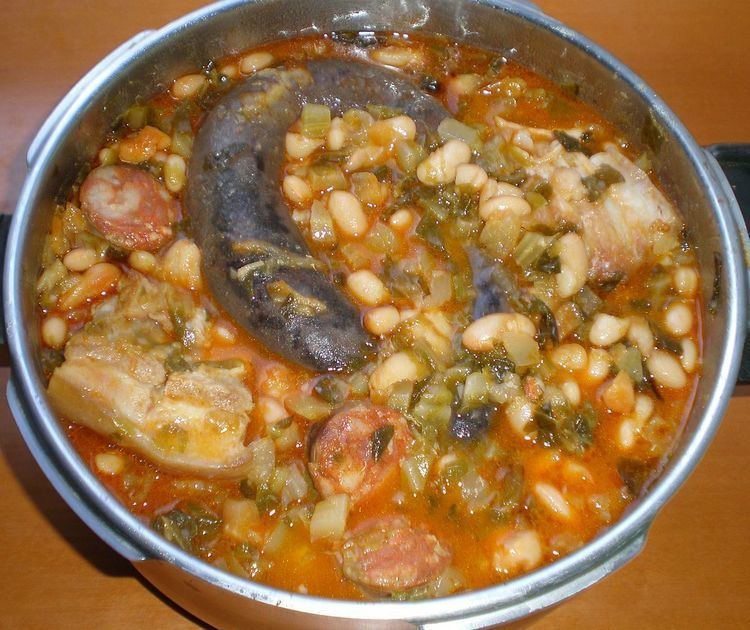 | ||
Cantabrian cuisine comprises a select list of ingredients: fish and seafood from the sea; salmon and trout from the upper basins of the rivers; vegetables, legumes and cow milk from the valleys; or veal and game from the mountains.
Contents
Fish and seafood
Seafood is widely used, from the entire coast and the Bay of Santander in particular, including clams, mussels, pod razors, cockles, crabs, barnacles, crayfish, snails, lobster, and squid. Fish include sea bass, hake, scorpion fish, anchovies, sardines, and tuna. The tuna or bonito is used in one of the most typical dishes of the region: sorropotún or marmita. Some of the most renowned Cantabrian dishes are hake in green sauce, squid with onions and squid ink maganos encebollaos, and clam casserole.
Meats
Veal is widely consumed, often from the Tudanca cattle. The National Cattle Fair of Torrelavega, the largest cattle fair in Spain, is held in Cantabria. Game is also of high quality: deer, roe deer and wild boar. Pork is a key element for the cocido montañés, literally mountain stew, with beans, cabbage and other ingredients.
Pastry
Cantabrian pastries include the traditional sobaos and Quesada Pasiega. Puff pastry is widely used, with different names in different regions: Corbatas in Unquera and San Vicente de la Barquera, polkas in Torrelavega, or sacristanes in Liérganes. Other notables sweetmeats are frisuelos and the canónigo, both of Liébana, corazones in Liérganes, the palucos of Cabezón de la Sal, and the tortos and pantortillas of Reinosa. Other desserts not of Cantabrian origin are rice pudding, natillas and leche frita, and fruit jams.
Dairy products include Cantabrian cream cheese, Picón Bejes-Tresviso in Tresviso, smoked cheeses such as Áliva or Pido, and the Quesucos de Liébana, made with a mixture of cow's and sheep milk.
Alcoholic beverages
Orujo is the Cantabrian pomace brandy. Historically cider and chacoli wine were a specialty; after a major decline they are recovering.
Cantabria has two wines with Denominación de Origen Calificada (Protected Geographical Status): Vino de la Tierra Costa de Cantabria and Vino de la Tierra de Liébana.
